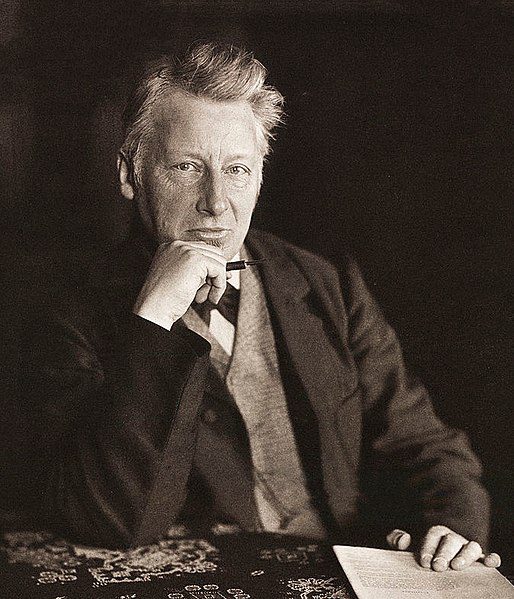
Jacobus Henricus van’t Hoff. Photo by Nicola Perscheid. Wikimedia Commons
Top 10 Facts about Jacobus Henricus van’t Hoff
Jacobus Henricus van’t Hoff was a Dutch physical chemist who was born on 30th August 1852 and died on 1st March 1911 of Tuberculosis at the age of 58.
He was not only a highly influential theoretical chemist of his time but the first winner of the Nobel Prize in Chemistry among other notable honors and awards.
Van’t Hoff’s pioneering work helped found the modern theory of chemical affinity, chemical equilibrium, chemical kinetics, and chemical thermodynamics among other remarkable works.
The top 10 facts about Jacobus Henricus van’t Hoff include the following.
1. He Was Interested in Science and Nature from A Young Age

Prof. Dr. Eduard Mulder.Photo by Unknown author. Wikimedia Commons
Jacobus Henricus van‘t Hoff, a physician, and Alida Jacoba Kolff were Van’t Hoff’s parents. He was the third born in a family of seven children.
He obtained his technology diploma in 1871 from the Polytechnic School at Delft. During a vacation-work at a sugar factory he anticipated to pursue a dreary profession as a technologist at the factory.
From a young age he was interested in science and nature. He frequently took part in botanical excursions while still young in age.
He obtained his doctor’s degree under Prof. Dr. Eduard Mulder from the University of Utrecht in 1874 and thereafter became a lecturer at the Veterinary College in the city.
2. Van ‘t Hoff Chose to Study Chemistry Against the Wish of His Father

Delft University of Technology. Photo by Ymblanter. Wikimedia Commons
Van ‘t Hoff enrolled first at Delft University of Technology in September 1869, and studied until 1871. He obtained a degree of chemical technologist in 1871 after passing his final exams.
Although the time assigned to study was three years, he passed all his courses in two years. He enrolled to study chemistry at the University of Leiden.
His decision to study chemistry was against what his father wished that he studied in school.
3. Van’t Hoff Is Considered One of the Founders of Physical Chemistry

Wilhelm Ostwald. Photo by Unknown author. Wikimedia Commons
Born in Rotterdam, the Netherlands in 1852, Van’t Hoff earned his doctorate degree in Utrecht in 1874 and for many years was a professor in Amsterdam.
He moved to Berlin and was offered a position with more research and less teaching in 1896.
He entered for the first time the field of physical chemistry in his book Études de Dynamique chimique (Studies in dynamic chemistry) which appeared in 1884.
His development of the general thermodynamic relationship between the heat of conversion and the displacement of the equilibrium as a result of temperature variation was a key accomplishment.
He found that the equilibrium in a system will tend to shift in such a direction as to oppose the temperature change which is imposed upon the system at constant volume.
Together with Wilhelm Ostwald, with whom they can be regarded as founders of physical chemistry they established the Zeitschrift für physikalische Chemie in Leipzig.
4. His Work in The Field of Organic Chemistry Earnest His Earliest Reputation

Joseph Achille Le Bel. Photo by Unknown author. Wikimedia Commons
Van ‘t Hoff accounted for the phenomenon of optical activity in 1874.
He did this by assuming that the chemical bonds between carbon atoms and their neighbors were directed towards the corners of a regular tetrahedron.
He found that the isomers found in nature are accounted for by this three-dimensional structure.
The French chemist Joseph Le Bel who independently came up with the same idea shares credit with him for these findings.
His theory which today is regarded as the foundation of stereochemistry was published three months before his doctoral degree was awarded.
5. Van ‘t Hoff’s Epoch-making Publications Made Him Famous
Van ‘t Hoff’s doctorate thesis was entitled Bijdrage tot de Kennis van Cyaanazijnzuren en Malonzuur which was published in 1874.
His publication which appeared several months before titled Voorstel tot Uitbreiding der Tegenwoordige in de Scheikunde gebruikte Structuurformules in de Ruimte was of far greater weight.
The impetus to the development of stereochemistry was boosted by this small pamphlet, consisting of twelve pages text and one-page diagrams.
The concept of the “asymmetrical carbon atom”, dealt with in that publication, supplied an explanation of the occurrence of numerous isomers.
The occurrence of numerous isomers had been previously inexplicable by means of the then current structural formulae until this small pamphlet was produced.
6. Van ‘t Hoff’s Revolutionary Ideas Gained Acceptance In 1875
It was only after the publication, in 1875, of his Chimie dans l’Espace and translated to German with an introduction by J. Wislicenus that his revolutionary ideas gained acceptance.
Its was only after 1891 that the English translation titled Chemistry in Space appeared.
He drew attention to the fact that J.A. Le Bel had independently arrived at the same ideas, though in a more abstract form in his Dix Années dans l’Histoire d’une Théorie.
7. Van‘t Hoff Greatly Valued The Power Of Imagination In Scientific Work
Van‘t Hoff greatly valued the power of imagination in scientific work.
This was apparent from his inaugural address on taking up his professorship in Amsterdam: Verbeeldingskracht in de Wetenschap (The power of imagination in Science).
He arrived at the conclusion that the most prominent scientists have possessed this quality in a high degree after a rather elaborate study of biographies in his address.
8. Van‘t Hoff was a lover of nature
Van‘t Hoff frequently took part in botanical excursions as a student in Leyden.
When he moved to Bonn he fully enjoyed the mountains in the vicinity, taking long walks alone or with some company.
His love for travel was demonstrated by his quite detailed description of his journey to the United States, which resulted in an invitation to lecture at Chicago University.
9. He Was Awarded the Nobel Prize in Chemistry In 1901
In 1901, Van ‘t Hoff was awarded the first Nobel Price in Chemistry.
He mentioned that the award of the Nobel Prize in Chemistry was to him the culmination-point of his career.
The Nobel Prize in Chemistry is awarded annually to scientists in the various fields of chemistry for outstanding contributions by the Royal Swedish Academy of Sciences.
10. Van ‘t Hoff Received Numerous Honors and Awards
Van ‘t Hoff was appointed as a Member of the Royal Netherlands Academy of Arts and Sciences in 1885.
He was also elected as a member to the American Philosophical Society in 1904.
He was awarded honorary doctorates from Harvard and Yale in 1901, Victoria University, the University of Manchester in 1903 and University of Heidelberg in 1908.
Along with Le Bel he was awarded the Davy Medal of the Royal Society in 1893 and in 1897 elected a Foreign Member of the Royal Society among many other awards and honors.
Planning a trip to Paris ? Get ready !
These are Amazon’s best-selling travel products that you may need for coming to Paris.
Bookstore
- The best travel book : Rick Steves – Paris 2023 – Learn more here
- Fodor’s Paris 2024 – Learn more here
Travel Gear
- Venture Pal Lightweight Backpack – Learn more here
- Samsonite Winfield 2 28″ Luggage – Learn more here
- Swig Savvy’s Stainless Steel Insulated Water Bottle – Learn more here
Check Amazon’s best-seller list for the most popular travel accessories. We sometimes read this list just to find out what new travel products people are buying.












